Library
#1

A practical manual for MANAGED COLLABORATION: How to build collaborative client-supplier relationships in B2B Projects and Solutions
Building collaborative relationships is key in B2B Projects and Solutions. This manual shows you how to do: This is Managed Collaboration.
Success in B2B Projects and Solutions depends on your capability to build collaborative relationships with your business partners, clients or suppliers. In the fast-paced, ultra-competitive 21st Century, this capability has become a key competitive advantage. For organizations involved in “buying” or “selling” B2B Projects and Solutions, collaboration is no longer a mere social competence, mastered by certain charismatic individuals. It is a strategic capability, embedded into their organization, enabling them to build up highly effective collaborative relationships with their B2B partners in a structured, organized and repeatable way, early in the project lifecycle. And to perform more consistently in their B2B Projects and Solutions.
This manual is the How-To guide to engineer collaborative relationships and win your projects. At the start. This is of interest to all those involved in B2B Projects and Solutions, including in particular: Executives, Procurement Managers, Sales & Business Development Managers, Project Managers, Marketing, Bid-, Tender Managers, Technical specialists, Consultants, Commercial & Contract managers, Lawyers, Public authorities, Developers, Financiers.
#2
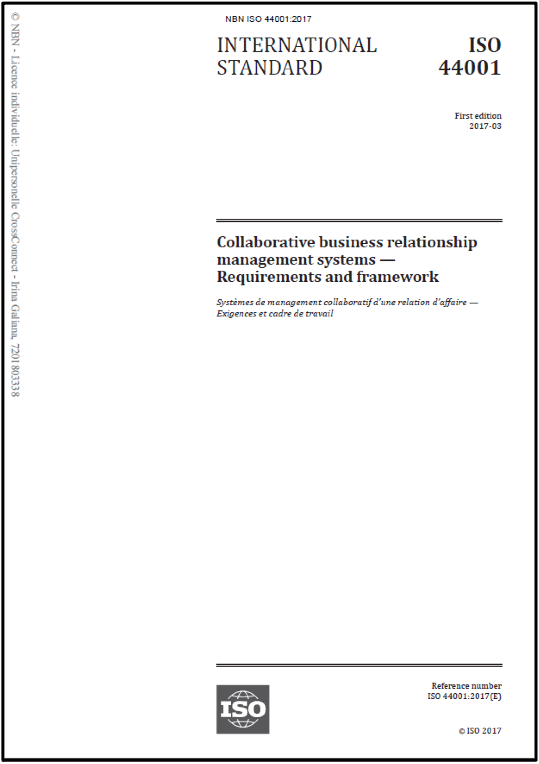
ISO 44001:2017
ISO 44001:2017 specifies requirements for the effective identification, development and management of collaborative business relationships within or between organizations.
ISO 44001:2017 is applicable to private and public organizations of all sizes, from large multinational corporations and government organizations, to non-profit organizations and micro/small businesses.
Application of ISO 44001:2017 can be on several different levels, e.g.:
- a single application (including operating unit, operating division, single project or program, mergers, and acquisitions);
- an individual relationship (including one-to-one relationships, alliance, partnership, business customers, joint venture);
- multiple identified relationships (including multiple partner alliances, consortia, joint ventures, networks, extended enterprise arrangements, and end-to-end supply chains);
- full application organization-wide for all identified relationship types.
#3

Collaborative Project Procurement Arrangements
Large projects, especially in the construction and infrastructure sectors, involve collaborations of many different types, such as built-own-operate, public-private partnership, or competitive dialogue. This monograph details the authors' research on the types of collaborative projects.
The research undertaken for this book responds to the need for a taxonomy of relationship-based procurement approaches, a particular type of project alliancing in need of standardization. Recommendations are made based on interviews with 36 subject matter experts from several countries, as well as an extensive literature review.
#4

Construction Partnering and Integrated Teamworking
‘As long as the government continues to push collaborative working and best value, partnering will be in vogue’ If you are implementing partnering in your organization and don’t know where to start, this book covers everything you’ll need - explaining all aspects of the partnering relationship from scratch. Construction Partnering & Integrated Teamworking provides information and instruction on the full range of topics in sufficient depth and tells you: how to do it and the tools you’ll need the pitfalls to avoid. With its accessible and practical approach, Construction Partnering & Integrated Teamworking trains you in the essential elements of partnering.
The authors Since setting up Mike Thomas Ltd in 1997, Gill and Mike Thomas have facilitated more than 400 project and strategic team workshops including partnering, value and risk management, post-project reviews, team-building, and best practice training.
#5

Integrated Project Delivery: An Action Guide for Leaders
This is a resource prepared for practitioners of Integrated Project Delivery. It is a step-by-step guide to the implementation of Integrated Project Delivery for new and experienced leaders. It is full of real project examples and pictures.
#6

Partnering in the Construction Industry: A Code of Practice for Strategic Collaborative Working
Partnering is the most effective way of tackling construction projects. This book explains how clients and construction firms using partnering can achieve ever-higher levels of efficiency and certainty to provide world-class buildings and infrastructure of all kinds.
Detailed guidance about the actions that clients and professionals new to partnering need to take is given followed by advice about the actions individual firms can take to get the maximum benefits from partnering. Finally, the book describes how highly developed forms of partnering are developing into strategic collaborative working that turns construction into a genuinely modern industry able to meet all customers’ needs.
The book is designed to be used flexibly by a variety of readers, with colored sections and executive summaries built into the body of the text to enable senior managers to get a quick overview of the guidance provided. The detailed guidance provides those at the workface with the ammunition needed to cooperate with those around them in doing their best work. The guidance is supported by checklists that help ensure everyone involved knows what they need to do to match and then exceed today’s best practices. Construction clients will learn how to get high quality, reliable and fast completion and a firm price that represents best value for money.
This book helps everyone in the construction industry be fairly rewarded for delivering best practices. The expert guidance also gives the construction industry the time and resources needed to give proper attention to all aspects of quality including sustainability and total life cycle costs, to match and then exceed today’s best practices.
#7
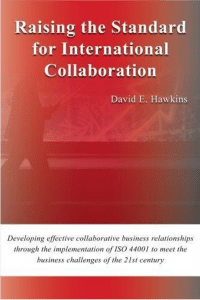
Raising the Standard for International Collaboration
The world is changing, and at a faster rate than perhaps ever could have been envisaged. Globalization is no longer an aspiration; it is a fact of life. The networked economy is rewriting traditional business thinking of ownership and creating alternative business models based on interdependent and complementary capabilities. The supply chain is giving way to the concept of a more holistic value chain but one factor remains constant: relationships are a core ingredient for successful business. In future, managers will work in an environment where cultural understanding, language and relationship skills will be as important as IT and technical skills are today.
Collaboration, whilst not a solution in itself, offers an alternative perspective through integrated delivery networks, both local and global optimized by focusing on the boundaries between organizations, based on what each does best in a complementary process. Harnessing this added value means challenging traditional thinking and management professionals should be looking to the future business models and developing collaborative capability to support their organizations. Collaboration does not mean disregarding traditional values or skills, but it does require looking at today's challenges from a more holistic viewpoint to capture additional benefits.
#8
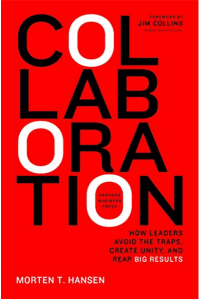
Collaboration: How Leaders Avoid the Traps, Build Common Ground, and Reap Big Results
In Collaboration, author Morten Hansen takes aim at what many leaders inherently know: in today's competitive environment, companywide collaboration is imperative for successful strategy execution, yet the sought-after synergies are rarely if ever, realized. In fact, most cross-unit collaborative efforts end up wasting time, money, and resources. How can managers avoid the costly traps of collaboration and instead start getting the results they need?
In this book, Hansen shows managers how to get collaboration right through "disciplined collaboration"-- a practical framework and set of tools managers can use to:
- Assess when--and when not--to pursue collaboration across units to achieve goals
- Identify and overcome the four barriers to collaboration
- Get people to buy into the larger picture, even when they own only a small piece of it
- Be a "T-Shaped Manager," collaborating across divisions while still working deeply in your own unit
- Create networks across the organization that are not large, but nimble and effective
Based on the author's long-running research, in-depth case studies, and company interviews, Collaboration delivers practical advice and tools to help your organization collaborate--for real results.
#9

Radical Collaboration: Five Essential Skills to Overcome Defensiveness and Build Successful Relationships
The second edition of the essential guide, updated with new research and observations to help twenty-first century organizations create models for effective collaboration.
Collaborative skills have never been more important to a company’s success and these skills are essential for every worker today. Radical Collaboration is a how-to-manual for creating trusting, cooperative environments, and transforming groups into motivated and empowered teams. James W. Tamm and Ronald J. Luyet provide tools that will help you increase your ability to work successfully with others, learn to be more aware of colleagues, and better problem-solve and negotiate.
Radical Collaboration is an eye-opener for leaders, managers, HR professionals, agents, trainers, and consultants who are seeking constructive ways of getting the results they want.
#10
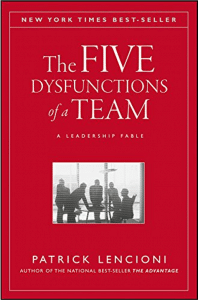
The Five Dysfunctions of a Team: A Leadership Fable
In The Five Dysfunctions of a Team Patrick Lencioni once again offers a leadership fable that is as enthralling and instructive as his first two best-selling books, The Five Temptations of a CEO and The Four Obsessions of an Extraordinary Executive. This time, he turns his keen intellect and storytelling power to the fascinating, complex world of teams.
Kathryn Petersen, Decision Tech's CEO, faces the ultimate leadership crisis: Uniting a team in such disarray that it threatens to bring down the entire company. Will she succeed? Will she be fired? Will the company fail? Lencioni's utterly gripping tale serves as a timeless reminder that leadership requires as much courage as it does insight.
Throughout the story, Lencioni reveals the five dysfunctions which go to the very heart of why teams even the best ones-often struggle. He outlines a powerful model and actionable steps that can be used to overcome these common hurdles and build a cohesive, effective team. Just as with his other books, Lencioni has written a compelling fable with a powerful yet deceptively simple message for all those who strive to be exceptional team leaders.
#11
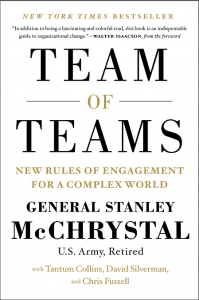
Team of Teams: New Rules of Engagement for a Complex World
When General Stanley McChrystal took command of the Joint Special Operations Task Force in 2004, he quickly realized that conventional military tactics were failing. Al Qaeda in Iraq was a decentralized network that could move quickly, strike ruthlessly, then seemingly vanish into the local population. The allied forces had a huge advantage in numbers, equipment, and training—but none of that seemed to matter. To defeat Al Qaeda, they would have to combine the power of the world’s mightiest military with the agility of the world’s most fearsome terrorist network. They would have to become a "team of teams"—faster, flatter, and more flexible than ever.
In Team of Teams, McChrystal and his colleagues show how the challenges they faced in Iraq can be relevant to countless businesses, nonprofits, and organizations today. In periods of unprecedented crisis, leaders need practical management practices that can scale to thousands of people—and fast. By giving small groups the freedom to experiment and share what they learn across the entire organization, teams can respond more quickly, communicate more freely, and make better and faster decisions.
Drawing on compelling examples—from NASA to hospital emergency rooms—Team of Teams makes the case for merging the power of a large corporation with the agility of a small team to transform any organization.
#12

Collaborative Construction Procurement and Improved Value
The guide explores how procurement and contracts can create an integrated team while improving value, economy, quality, and client satisfaction.
Collaborative Construction Procurement and Improved Value provides an important guide for project managers, lawyers, designers, constructors, and operators, showing step-by-step how proven collaborative models and processes can move from the margins to the mainstream. It covers all stages of the project lifecycle and offers new ways to embed learning from one project to the next.
Collaborative Construction Procurement and Improved Value explores how strategic thinking, intelligent team selection, contract integration, and the use of digital technology can enhance the value of construction projects and programmes of work. With 50 UK case studies, plus chapters from specialists in 6 other jurisdictions, it describes in detail the legal and procedural route maps for successful collaborative teams.
Collaborative Construction Procurement and Improved Value:
- Examines the ways to create an effective contract that will spell success throughout the procurement process;
- Contains helpful case studies from real-world projects and programmes;
- Explores the benefits of the collaborative construction process and how to overcome common obstacles;
- Bridges the gaps between contract law, collaborative working, and project management;
- Includes the first analysis of the NEC4 Alliance Contract, the FAC-1 Framework Alliance Contract, and the TAC-1 Term Alliance Contract.
#13

The Toyota Way to Lean Leadership: Achieving and Sustaining Excellence through Leadership Development
TOYOTA. The name signifies greatness—world-class cars and game-changing business thinking. One key to the Toyota Motor Company’s unprecedented success is its famous production system and its lesser-known product development program. These strategies consider the end user at every turn and have become the model for the global lean business movement.
All too often, organizations adopting lean miss the most critical ingredient—lean leadership. Toyota makes enormous investments in carefully selecting and intensively developing leaders who fit its unique philosophy and culture. Thanks to the company’s lean leadership approach, explains Toyota Way author Jeffrey Liker and former Toyota executive Gary Convis, the celebrated carmaker has set into motion a drive for continuous improvement at all levels of its business. This has allowed for:
- Constant growth: Toyota increased profitability for 58 consecutive years—slowing down only in the face of 2008’s worldwide financial difficulties, the recall crisis, and the worst Japanese earthquake of the century.
- Unstoppable inventiveness: Toyota’s approach to innovative thinking and problem-solving has resulted in top industry ratings and incredible customer satisfaction, while allowing the company to weather these three crises in rapid succession and to come out stronger.
- Strong branding and respect: Toyota’s reputation was instrumental in the company’s ability to withstand the recalls-driven media storm of 2010.
- But what looked to some to be a sinking ship is once again running under a full head of steam. Perhaps the Toyota culture had weakened, but lean leadership was the beacon that showed the way back.
- In fact, writes Liker, the company is “as good and perhaps a better model for lean leadership than it ever has been.” of innovation and growth. Yet, Industry Week reports that just 2 percent of companies using lean processes can likewise claim to have had long-term success. What the other 98 percent lack is unified leadership with a common method and philosophy.
If you want to get lean, you have to take it to the leadership level. The Toyota Way to Lean Leadership shows you how.
#14

Future Search: Getting the Whole System in the Room for Vision, Commitment, and Action
A Future Search is a meeting that uniquely enables people to take down the walls that keep them apart. Future Search details this highly successful way for organizations and communities of all types to apply global thinking and democratic values to achieve rapid, whole-systems improvement. In this widely successful approach, diverse stakeholders in an organization, community, or issue come together for two or three days to explore their shared past, present, and future in a global context. What makes this meeting different from other look-alikes are the transformative underlying principles: Get the whole system in the room; think globally (the "whole elephant") before acting locally; focus on the future and common ground; self-manage tasks and take responsibility for action.
#15

Learning to Collaborate, Collaborating to Learn: Engaging Students in the Classroom and Online
Students who know how to collaborate successfully in the classroom will be better prepared for professional success in a world where we are expected to work well with others. Students learn collaboratively and acquire the skills needed to organize and complete collaborative work when they participate in thoughtfully-designed learning activities.
Learning to Collaborate, Collaborating to Learn uses the author's Taxonomy of Online Collaboration to illustrate levels of progressively more complex and integrated collaborative activities.
- Part I introduces the Taxonomy of Online Collaboration and offers theoretical and research foundations.
- Part II focuses on ways to use the Taxonomy of Online Collaboration, including, clarifying roles and developing trust, communicating effectively, organizing project tasks and systems.
- Part III offers ways to design collaborative learning activities, assignments, or projects, and ways to fairly assess participants' performance.
Learning to Collaborate, Collaborating to Learn is a professional guide intended for faculty, curriculum planners, or instructional designers who want to design, teach, facilitate, and assess collaborative learning. The book covers the use of information and communication technology tools by collaborative partners who may or may not be co-located. As such, the book will be appropriate for all online, blended learning, or conventional classrooms that infuse technology with "flipped" instructional techniques.
#16

Collaborative Advantage How Organizations Win by Working Together
Collaboration across organizational boundaries is often critical to achieve an objective, but difficult to achieve in practice. This book explores the structures, processes, roles, skills, tools and techniques that enable people in different places to achieve a successful joint outcome and build advantage through collaboration. Written by an experienced practitioner who has facilitated many collaborative efforts, it includes practical case studies to illustrate key points.
